Lewis Carroll’s most famous creation, Alice’s Adventures in Wonderland, was first published 150 years ago in November 1865. As the work of a relatively unknown author, neither the Observer nor the Manchester Guardian saw fit to review it.

The book’s popularity changed all that, and when the sequel, Through the Looking Glass, was published six years later, the Guardian claimed that ‘the author has surpassed all modern writers of children’s books except himself.’
Through the Looking Glass included Carroll’s nonsense poem The Jabberwocky. Years later, in 1888, Carroll set down the origins of his mythical creature in a letter to a girls’ school in Boston.
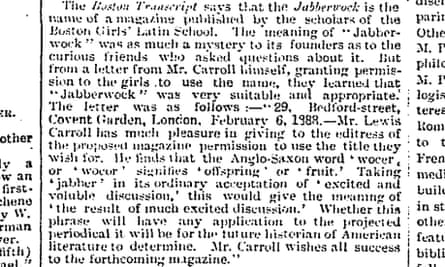
Carroll published other poetry and fiction, with varied success. In April 1869, the Manchester Guardian reviewed his Phantasmagoria and other Poems.
Though a lengthy extract accompanied it, the reviewer concluded that ‘we found Phantasmagoria very hard reading indeed, and at the end of it experienced the disagreeable feeling of having been sold.’
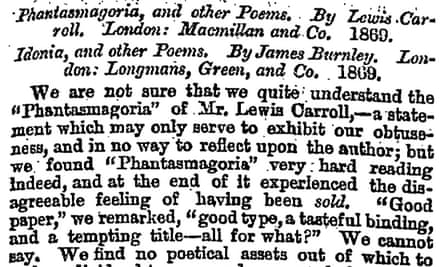
New editions of the Alice books were printed regularly, though not always successfully, to keep up with demand. In 1894 Carroll was so incensed by a poor quality print run of Through the Looking Glass that he withdrew it from sale and urged readers who had bought it to return copies to Macmillan, the publisher.
He donated unsold copies to ‘mechanics’ institutes, village reading-rooms and other similar institutions where the means for purchasing such books are scanty.’
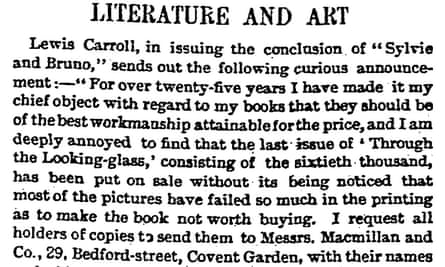
The book’s success made a stage version inevitable. In 1876 the Observer ran an ad for a ‘new fanciful, spectacular, and musical entertainment’ based on Carroll’s book, but it wasn’t until a decade later that the first official adaptation appeared.
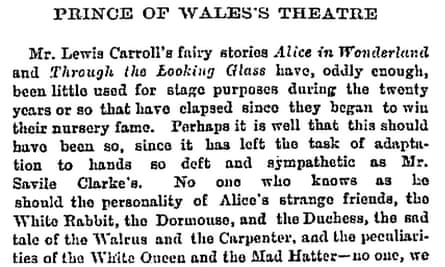
Lewis Carroll was the pen name of Charles Lutwidge Dodgson, a mathematician at Oxford university. There are occasional glimpses of this quite separate academic life in print.
In 1876, Dodgson circulated a broadside objecting to the appointment of a deputy to do a professor’s work on half the salary. Nine years later, he signed his name to an open letter opposing a vivisection laboratory at the university.
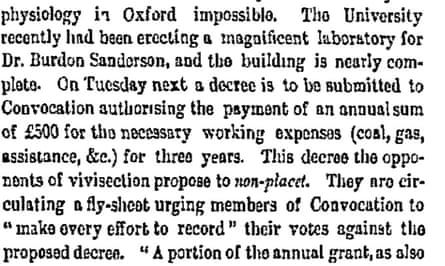
When Dodgson died in January 1898 it was not only his most famous creations that were praised. A correspondent applauded Carroll as the inventor of what he called doublets, a word puzzle requiring ‘the transformation, in the fewest possible moves, of one given word to another’.
Dodgson was a writer who, said the Guardian, ‘has been the delight of children and not a few of their seniors for thirty years’, though ‘to the public he desired to be known simply as a mathematician’.
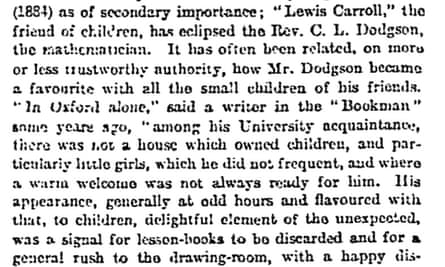
Three Sunsets and Other Poems, Carroll’s last published work, was issued a month after his death, the preface written shortly before he died.
The Guardian found it ‘fitting that the last published words of Lewis Carroll should be devoted to children, whom he loved so well, and to whose joy he has made so enduring a contribution.’





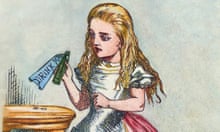
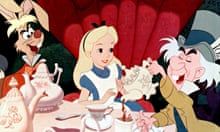

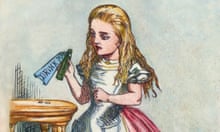
Comments (…)
Sign in or create your Guardian account to join the discussion